Stolen Pins On Pinterest: How To Protect Your Small Pet Business
As the popularity of a social media platform grows, so too will the number of people trying to manipulate the system and hijack the success of others. A clear example of this in action is the recent rise in stolen pins on Pinterest. The good news is that there are steps that you can take to protect your business and continue to leverage this powerful traffic-driving platform!
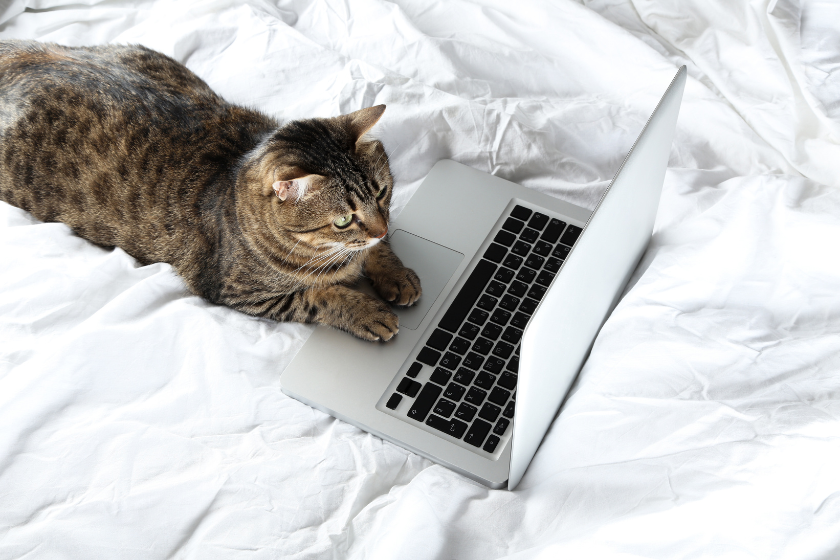
Why Use Pinterest for Your Small Business?
Once stigmatized as nothing more than a place for housewives to search for recipes and craft suggestions, Pinterest has evolved and grown into a powerful tool for marketers and small business owners. In fact, Pinterest reports over 430 million active users.
Consider, for a moment, the potential reach that a platform of that size can offer.
It provides small businesses with the opportunity to put their content and products in front of many new eyes by simply uploading and sharing a pin. This makes it a popular choice for marketers and small business owners looking to drive traffic back to a specific website with little to no monetary investment.
What Are Stolen Pins on Pinterest?
For those that are new to Pinterest, a pin is a single piece of visual content (a photo or video) shared by ‘pinning’ it to a board on your account with the option to add a title, description, and a link. When you search for something on Pinterest, you will see a screen full of these pieces of content. Clicking on one of these images or videos will bring you to a third-party website, which is how they drive traffic back to your site as a small pet business owner.
A stolen pin on Pinterest occurs when someone shares your content, however, the associated URL is different. By doing this, they use your content to fool the platform’s users. As they click through a pin expecting your website or article, they are then brought to a completely different site instead.
For example, look at this pin from our BlogPaws Pinterest account. As you can see, the graphic was made by us with our branding, as shown on the left. We can tell this is a valid pin and has not been stolen because the link that it directs traffic to, on the right, is our blog URL. However, if you see a pin where this information doesn’t match, that is an indication that the content has been stolen.
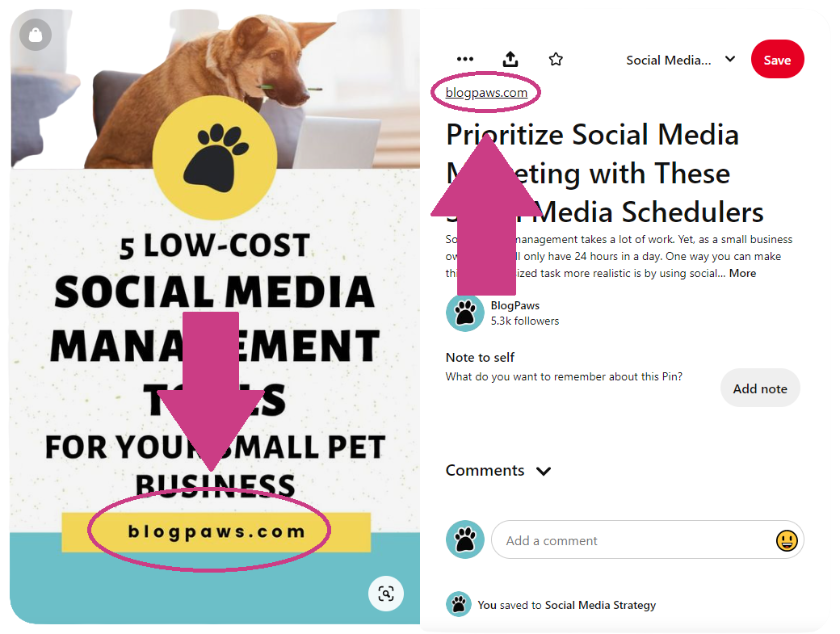
How Are Stolen Pins Created?
There are two different ways that stolen pins may be created and uploaded to the Pinterest platform. Understanding this is important, as not all stolen pins were created intentionally by those that have shared them.
First, you may come across a pin that was intentionally made to steal your traffic. This happens when someone saves your pin graphic and uploads it directly to Pinterest from their own account. Instead of uploading the pin with your details, they include their own URL effectively directing users to their site. This is a Pinterest pin violation and should be reported (see the process below).
The second way that a stolen pin may occur is a little more complex. This is most often seen when bloggers create a ‘round-up’ style post and upload your Pinterest graphic directly onto their website. Then, when viewers visit their site and click the button to pin directly from the site, your pin comes up as an option. This can lead to an innocent third party sharing your pin and directing traffic back to their website.
How Can Stolen Pins Hurt My Business?
While a stolen pin may, at first glance, appear to be a fairly minor offense, it can have a significant impact on your online marketing. Having a branded pin linked to a questionable or shady website can significantly hurt your reputation and brand image, greatly diminish your reach on the platform, or worse.
Brand Image/Reputation
As you create brand recognition online, Pinterest users may come across a pin that they know instantly is yours. This could be because they have seen it before in relation to your business or because there is clear branding on the graphic itself (which is considered a Pinterest best practice, more on that later).
These users will instantly have expectations relating to their opinion of your brand. For example, if they trust your brand they will expect that clicking on it will take them to your site, article, or product introduced in the pin as promised.
If, however, they click on that pin and are taken to a questionable website they may start to lose trust in anything associated with your brand. The next time that they see a pin with your branding, they may avoid sharing or clicking on it assuming it will be the same situation. If people can’t trust your content, they can’t trust your brand, which can hurt you when they are making buying decisions.
Negative Impact on Pinterest Reach
Any time that you are working to build your online presence on a social media platform, you have to learn to optimize that platform’s algorithm to allow your posts to receive a wider reach. Pinterest puts great emphasis on sharing trustworthy websites, and this can be seen in which pins are more likely to appear when you search for a specific topic.
If your pins are associated with a spammy or questionable website, the Pinterest algorithm may carry that negative association over to all pins sharing that same image, including the original pin linking back to your website. As a result, an otherwise popular and well-performing pin may suddenly be buried, not to be seen.
Account Closure
As I stated in the last point, Pinterest has put a significant emphasis on the sharing of only trustworthy websites in order to uphold the quality of the platform and protect its users. As a result, they are not opposed to removing accounts that they believe have violated their terms of service without warning.
While you can appeal the closure, even if you do get your account back it will likely be down for a long time while you go through the process of proving that you are who you say you are. Furthermore, you aren’t guaranteed you’ll get your account back!
Some accounts have been removed simply for sharing too many ‘spammy’ pins. Doing so can flag their system as if you were doing so intentionally. For this reason, it is important to double-check any pins you are sharing before pinning them to your own boards.
Another concern that small business owners may face occurs when many of your pins have been stolen and shared around the platform with links back to spammy sites. This can flag the specific images associated with the pin and lead to your account being flagged and removed for sharing the original pin even if it isn’t connected to the same website.
Tips to Keep Your Business Safe
Considering the many damaging effects of stolen pins on Pinterest, it is important to take any steps possible to protect your business and keep it safe.
There is no way to completely prevent Pinterest copyright infringement from happening. If there was, Pinterest themselves would have taken care of the problem a long time ago. However, the following steps will help you to reduce the risk of you falling victim to scammers, while also setting yourself up to deal with the situation faster and easier should you find yourself dealing with a stolen pin.
Protect Your Content with Branding
The use of branding on your Pinterest pins will not only protect your content from potential copyright infringement, but it is considered to be a ‘best practice’ when using the platform for business.
This means that you include your business name, logo or URL on the image itself when you are creating it. While some thieves can steal your image and add their own URL in the description details, they won’t be able to change the branding on the image itself. This can be used as proof that the pin was originally yours.
Including branding on your pins may also be a way to discourage more experienced scammers, as they will recognize that it is easy for those who are looking closely to realize that the pin has been stolen. It will also increase the chances that the stolen pin will be caught before you even discover it.
If you do end up needing to file Pinterest complaints for copyright infringement, the use of branding is clear, tangible proof that you were the original content creator.
As you can see in our pin for this post, we have included the BlogPaws URL along the bottom of the pin as well as our unique paw print closer to the top of the pin. These two elements are present on every one of our pins, making it easy to identify that it was created by us.
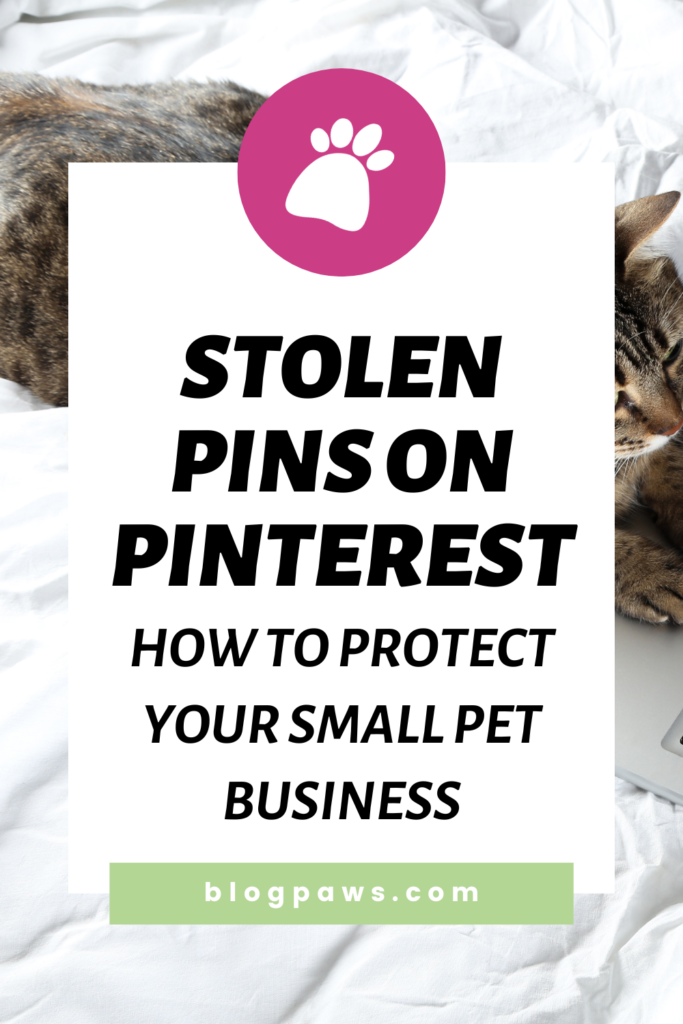
Another great way to make it clear to anyone that comes across your pin that it is connected with your business is to use a recognizable visual style. You can do this by incorporating your brand colors in each pin, sticking to a similar style or layout, using your brand fonts, or including original pictures that are all connected.
Your followers will learn to recognize your visual style. If someone does steal a pin, both you and your followers will likely notice this quicker, allowing you to address the problem.
Verify Links Before Sharing Third Party Content
As a business owner, you work hard to build up your social media presence. If Pinterest shuts down your account due to sharing ‘spam’ content, the process to appeal this decision and recover your account can be a long, detailed and frustrating one. To top it all off, you aren’t guaranteed to get your account back at the end of it, meaning that all that hard work may be lost.
While it takes a little more time to verify the links you are sharing before repining, it can prevent this whole headache!
If you are sharing other people’s pins, take the time to look at any branding on the image and verify that it matches the URL. You can take this a step further and click through the pin to verify that the content that it’s connected to is valuable and reputable if it’s a website you’re not familiar with. After all, anyone can put anything out on the internet. You wouldn’t want to share inaccurate or bad advice with your followers.
Monitor Relevant Keywords, Your Pinterest Feed, and Similar Content
One of the best things that you can do as a business owner is to be proactive when it comes to stolen pins on Pinterest. Take the time to schedule some time into your social media marketing schedule to simply monitor the activity on the platform. This will increase your chances of discovering any stolen content before it becomes a bigger problem.
Using the search feature, search keywords that you have targeted. Make sure that the results are set to include ‘All Pins’ not just yours. In the search results, you will find a selection of pins related to that topic. Scroll through the pins and see if you spot any of your pins. If you’ve taken the steps above, they should be easy to spot. Check to make sure these pins are directing people to your site.

Finally, if you select an image or video on Pinterest and then continue scrolling past the image itself, you will find a section titled ‘More like this’. Click on a pin similar to yours or even one of your pins, scroll down and check this area for your images. As before, check to ensure that it directs people to your website. If not, it’s time to report the pin.
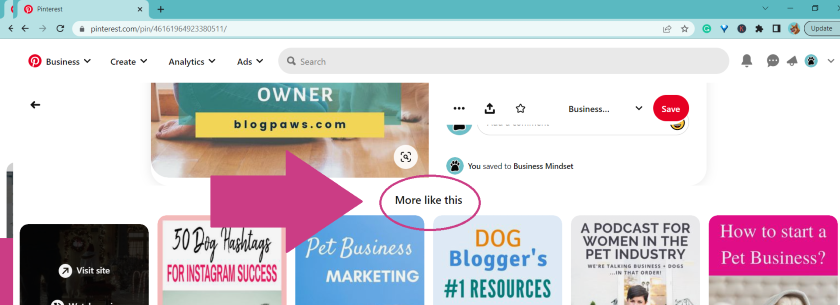
My Pin Has Been Stolen, Now What?
The first question that many people have after discovering a stolen pin is how to contact Pinterest. To make the process both easy and efficient, the Pinterest team has a simple reporting process in place.
If you discover that your content has been stolen, open up the stolen pin. In the top left-hand corner you will find three dots, clicking on this will open a menu where you will find the option ‘Report Pin’.
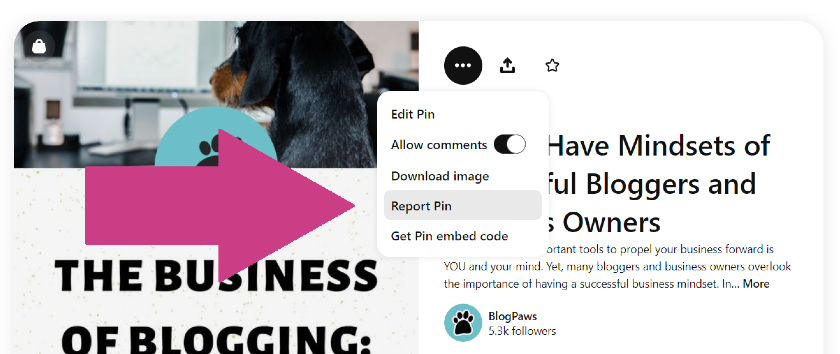
In the window that opens up, select ‘My intellectual property’ before clicking ‘Next’. You will be given 2 choices at this point: ‘This infringes my copyright’ and ‘This infringes my trademark’. In the case of a stolen pin, choose the first.
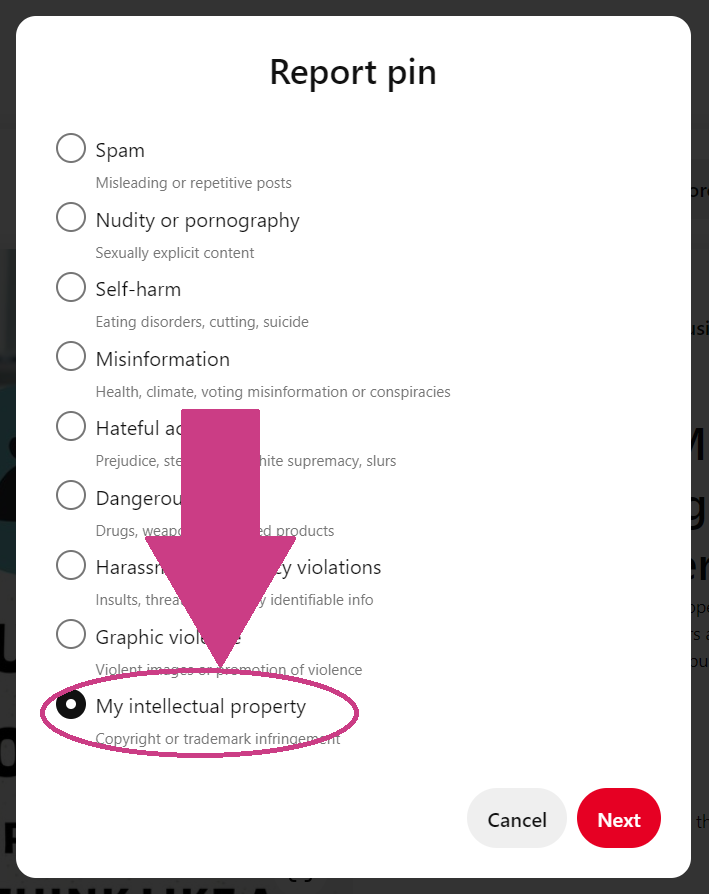
This will then open up a new window asking you for a bunch of specific information designed to assist the Pinterest team understand the situation and decide whether or not your claim is valid. This includes your contact information and proof that the pin in question is your own. For example, you provide the link to where the Pinterest image in question appears on your website.
One option that is available to you is to request not only the removal of the pin but also a ‘Strike’. This means that you are recommending that they not only delete your stolen pin but also close the account that shared it.
While this is a great feature, it also opens the door to penalize the wrong person. For example, the account that shared the specific image you discovered may not be the person who stole your pin. Instead, it may simply be someone who forgot to check the link before sharing or who simply didn’t know better.
If you know that the account that shared the pin is responsible for the stolen content, you can select this option. However, if you’re unsure you may want to stick to just reporting the pin. This doesn’t mean that the account holder will necessarily “get away with it.” If a single account has many reported pins, this trend could lead to an account closure.
Warning: When filling out the contact sheet, it is advised that you use a PO Box or business address as opposed to your home address in the Contact Information section. If the reported pinner tries to refute your claim, Pinterest may provide them with a copy of your report.
Despite the potential frustrations of dealing with scammers, Pinterest is a powerful tool in the world of social media marketing. For small pet business owners, it has the power to drive a significant amount of traffic to your website. Don’t allow a few bad apples to turn you off using the platform entirely!
Have you ever dealt with stolen pins on Pinterest? If so, how did you discover that your content has been stolen?
About the Author: Britt Kascjak, BlogPaws Director of Content & SEO, is an award-winning freelance writer whose background in digital and social media marketing spans 15+ years. She’s been a content creator in the pet industry for 9+ years with her own blogs: Shed Happens, The Kas Pack, and Lucifer the Rescue Pup where she shares her life and outdoor adventures with her 2 dogs and 3 cats. Read more…



